Months ago, we found ourselves in one of Guangzhou’s more uppity neighborhoods to buy an overpriced live Canadian lobster. The seafood market that was holding just so happened to be downstairs from one of our favorite Guangzhou restaurants, 13 Factories. The temptation to sneak upstairs for a late lunch was irresistible.
The owner’s mother grew up in Mississippi and the result is a covert stronghold of southern comfort classics like jambalaya and po’boy sandwiches, nestled in a second floor restaurant across from the American consulate. While seated at the bar, one bottle of wine on the back shelf left an unforgettable impression for its busy but elegant Chinese aesthetic. Fast forward to the spring of 2022 and we went back with our Chinese wine series in mind.
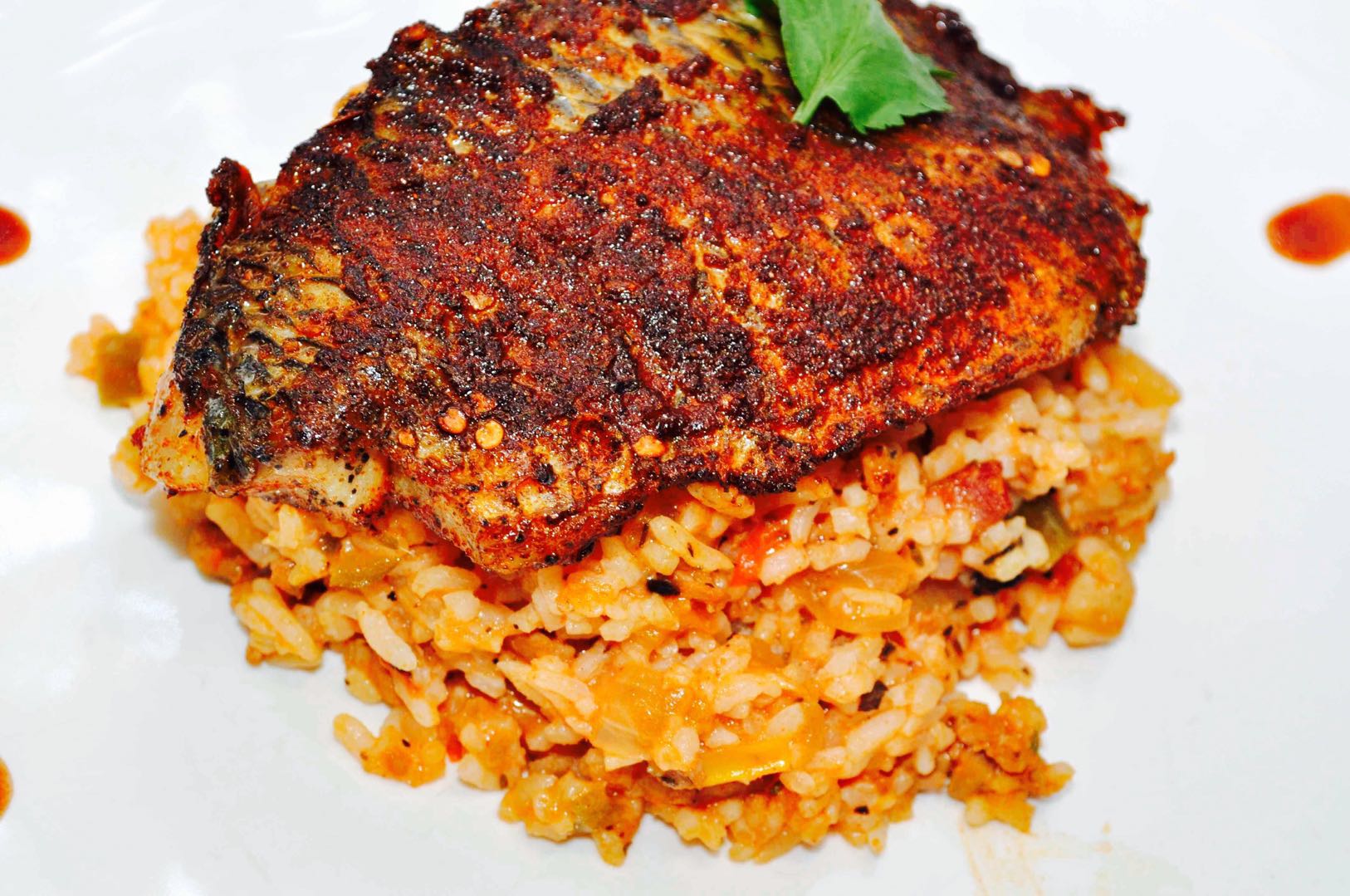
Jambalaya and blackened fish are Cajun classics. Image via 13 Factories
The owner tells us that he’s not familiar with the backstory of the wine, but the man behind it is a friend of a friend who would probably be happy to meet and share the tale. The date arrives and we return to 13 Factories on a quiet Wednesday afternoon — the final day of the May Day holiday.
Li Jiayang arrives punctually. He carries with him a branded gift bag bearing a logo that also adorns his blue polo shirt. He removes a beautiful box from the equally embellished gift bag and places it on the bar. The first thing he does is ask the barkeep to exchange the two bottles he brought with two bottles from the temperature controlled wine room, as his are too warm. He then opens an illustriously colorful bottle to xingjiu or wake up the wine. Despite Li’s warm and smiling demeanor, it becomes clear we’re dealing with a staunch professional.
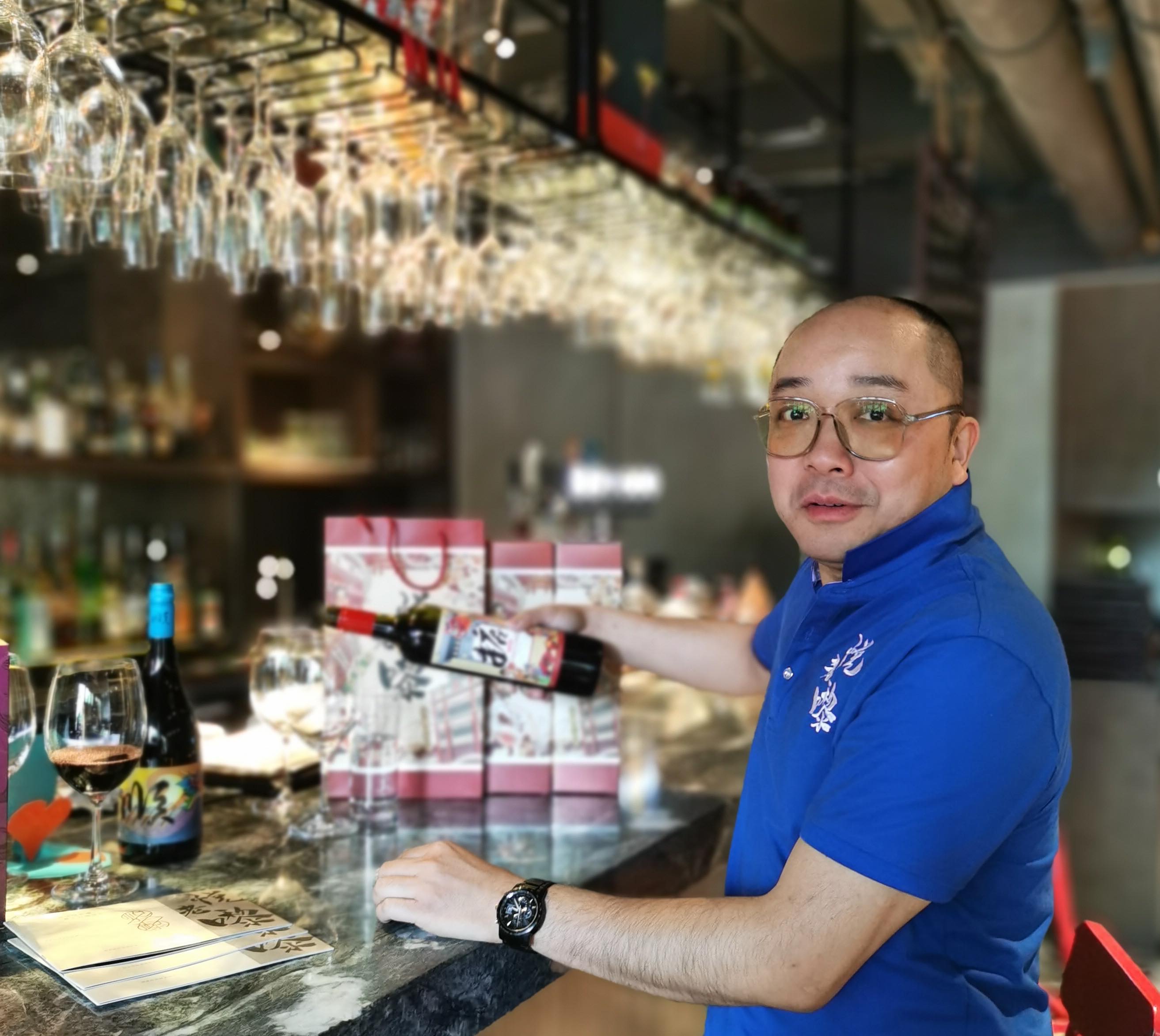
Li Jiayang insists that his friends call him Old Li. Image via That's
Li explains that the winemaking is done in Australia but is exclusively sold in China. Then his explanation of the eye-catching brand begins.
“I’m a very ordinary Guangzhou native. I joined an Australian company in 2008 and I was with them until 2018. After ten years, I felt it was time to start my own business venture. My friends call me 老黎(lao li) and 悦(yue) is a homonym of 粤 so I called the brand 悦老嚟 — pronounced yudloulei in Cantonese.”
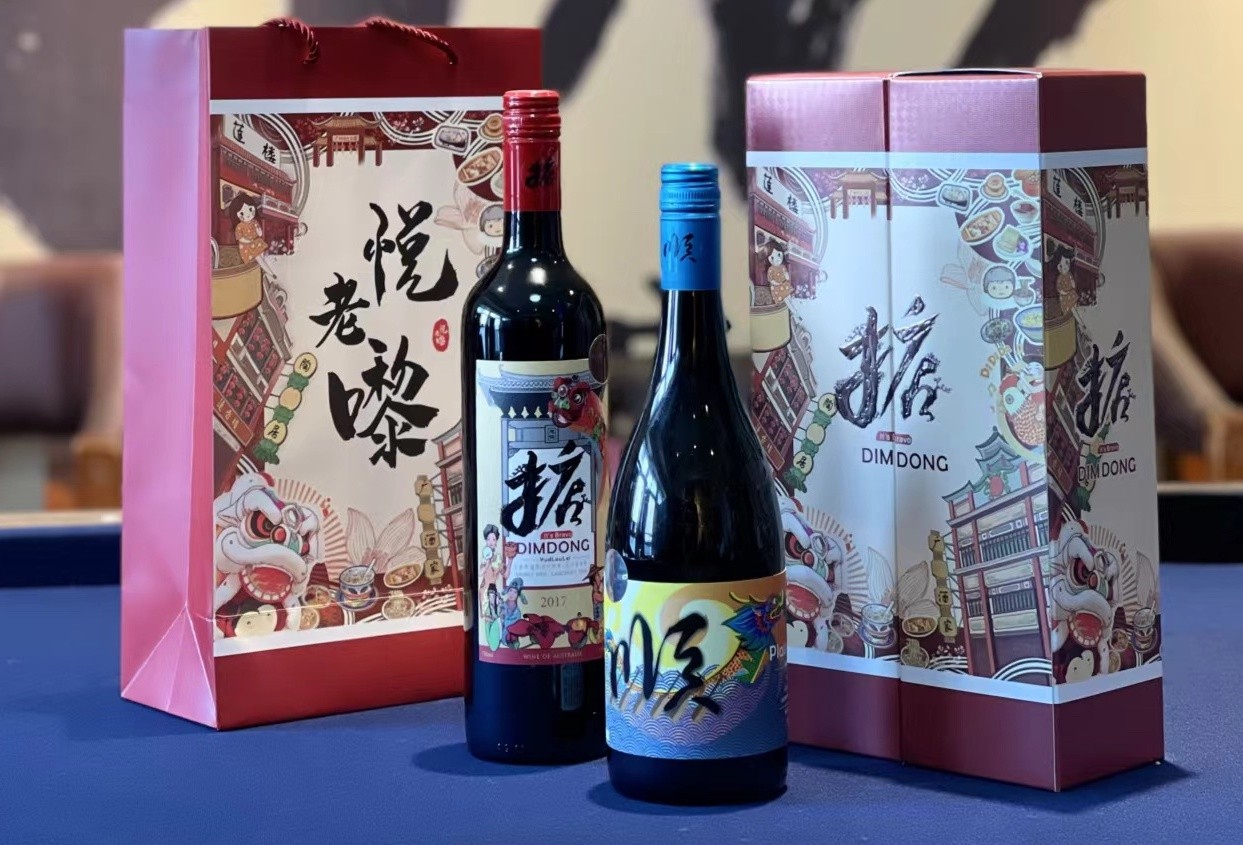
Li brings the wine in decorative gift packaging. Image via Lao Li
“I noticed that the labels of Japanese whiskey always use Chinese characters which is appealing to Chinese consumers. If the bottle of a breakthrough product was all in kanji characters or English then it might not become as memorable or popular in China. If a Japanese whiskey company is using this technique to sell whiskey in China, why can’t we apply the same principle to products within China as well.”
“My strengths are in marketing wine, not whiskey,” Li continues. “I had ten years of experience and connections in Australia. The owner of the company I worked for previously said I had his full support for whatever project I wanted to enter into. I had relationships with a number of wineries and therefore I had a guarantee that the wine would be of good quality.”
On this front Li is not mistaken. Both of his flagship wines are red blends. The bottle that brought us here, Dim Dong, and the colorful one decanting called Plain Sailing. Dim Dong is a 60/40 blend of shiraz and cabernet sauvignon from Langhorne Creek. According to Vivino.com, the area sits an hour from Adelaide and specializes in exactly those two grapes.
We take a moment to taste the wine and we are more than pleasantly surprised — it’s absolutely top notch. It’s bold with a lavish sophistication from the earthiness of liquorice and a musk like wet cedar. The tannins are present but in no way overpowering, they dance around the mouth and then retire. We nod in agreement when Li tells us that this wine won a 2022 Golden Bottle Award in the 12th anniversary of the ceremony held by Wine magazine. The dim in Dim Dong is Cantonese for dian which means great as an adjective and to excel at something in verb form. This wine most certainly lives up to its namesake. Li continues to elaborate on the logic behind the label.
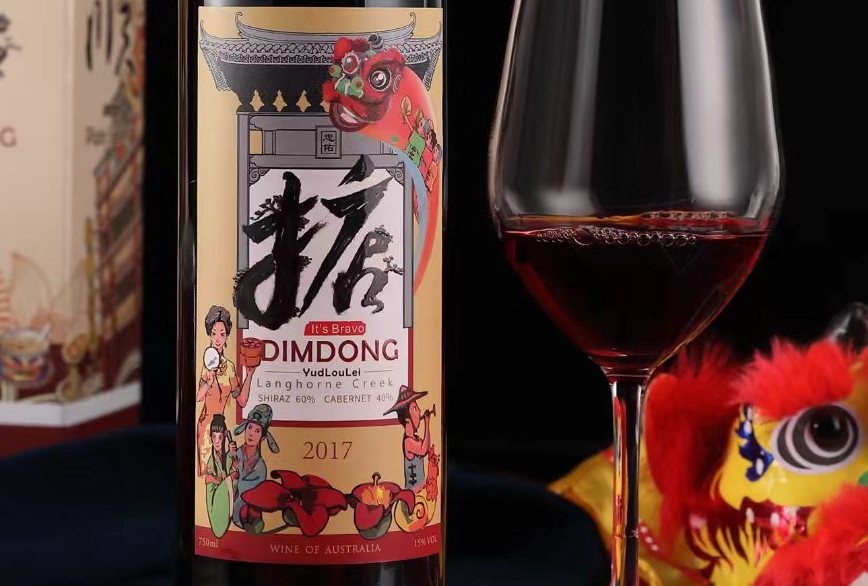
The label is rammed with Guangdong symbolism. Image via Lao Li
“The next step was designing the bottle. I wanted the wine to represent Guangzhou and so I found local designers to come up with ideas that encapsulated the local culture. The business model is to start in Guangzhou with a culture that I know well, then expand to include more products that appeal specifically to the heritage in other regions of China. It must be done patiently to be done well because there are so many unique cultures in different parts of China.”
Picking up the bottle of Dim Dong, he begins pointing to the scenes playing out in the miniature tableau.
“The design of this bottle here represents the soul of Lingnan and Guangfu culture. You can see the City God Temple, Cantonese opera, dim sum and kapok flowers which are the official flower of Guangzhou. The phrase in Cantonese also sounds like someone’s at the door (ding dong).
Li points to the elegantly dressed woman holding a circular fan and a bamboo steamer of dim sum. He says, “Also on the bottle you can see Miss Xiguan, a character from Qing dynasty folklore which represents the early modernity of Guangdong culture.”

Bootleg miniature Lego versions of Miss Xiguan can be acquired as souvenirs from Guangzhou. Image via @LOZ Lizhi/Weibo
As the story goes, Miss Xiguan became well versed in the customs and cultures of both China and the West because of better educational opportunities for young women and the bustling atmosphere of international trade. The folktale of Miss Xiguan seems to check out. A quick Baidu search for Miss Xiguan leads to an article paraphrasing what Li told us and asserting that 100 of the 300 private schools in Guangzhou at the end of the Qing dynasty were for girls only. A research paper from the Chinese University of Hong Kong titled 'The Rise of Women’s Modern Schooling in Late Qing China' suggests that the first private girls school in Guangzhou was opened by missionaries in 1850, although it had a slow and bumpy start.
Li decides that Plain Sailing has had enough time to breathe and so we acquire a second set of glassware and enter round two. Plain Sailing is also designated by just one Chinese character: shun. The word colloquially means ‘smooth’ and is close to the heart of all sea faring folk. The bottle depicts a bright sun, a rolling ubiquitously oriental wave pattern and a dragon boat.
“You know the Dragon Boat Festival, right?” Li asks rhetorically. “Watch races, eat zongzi. But you need a whole team to move a dragonboat. So then why did we use three different grapes in this wine? It’s for the same reason — the grapes work together and so we can’t just choose them randomly. Each grape has its own role to play, just like the roles of those on a dragon boat — it requires the spirit of teamwork.”

A dragon boat crew typically has 20 paddlers, a drummer and a sweep who steers from the rear. Image via @凤凰网/Weibo
Plain Sailing is a bouquet of 70% cabernet sauvignon and 15% merlot and shiraz respectively. The shiraz is from McLaren Vale but the cab and merlot are both from a region called Coonawarra in South Australia’s Limestone Coast. Referred to as Australia’s Bordeaux cousin in Decanter, the region is storied and sought after for its cabs. Li’s description of teamwork does it justice however, as the stalwart tannins of coastal cabernet are rendered almost plush by the residual sweetness of shiraz and merlot. The wine is full bodied but with an almost floral elegance and ripe fruitiness.

Coonawarra has seen a mean annual rainfall of over 575mm for three decades. Image via Wikimedia
We both agree that the wine is excellent so we ask Li how business is going. He points out a couple of crucial details about selling wine in China. First of all, he notes that most short video and live streaming platforms don’t allow alcohol consumption. Global booze giant AB InBev was fined by market regulators in Shanghai last year for depicting a "beer drinking motion" in an advertisement, as per Shine. We interrupt him, asserting that we most definitely have seen it happen, but he reminds us that if there is massive capital behind a product then the rules are more flexible. His business operates mostly through an ever expanding WeChat network and a mini program therein.
The second factor that is somewhat unique to China is educating customers about what to look for when tasting wine. Those who appreciate imported wine will likely recognize the wine producing regions that Dimdong is sourced from. They might know that McLaren Vale is known for bright berry fruits and deep purple hues. At the very least they’ve probably seen Penfolds on a shelf in a bodega near their home. Li laments, however, that there is still a significant swathe of the Chinese wine drinking populace that opts for sweetness over savvy.
China has developed a serious taste for red wine in the past two decades but there remains an exorbitant volume of wines that, from a Western perspective, are unpalatable. What Li describes is somewhat of a double edged sword. On the one side is Chinese drinking culture and on the other is a strong business incentive. He recounts that, during a stint working in a bar the summer after graduation, it was a common spectacle to see groups of businessmen assault a whole case of wine in classic ganbei fashion and then pour out into the street, vomiting off the curb. Sweet wine is easier to pound than heavy tannic dry reds. White wines, he adds, are out of the question as they need to be kept cold which is simply an added inconvenience.
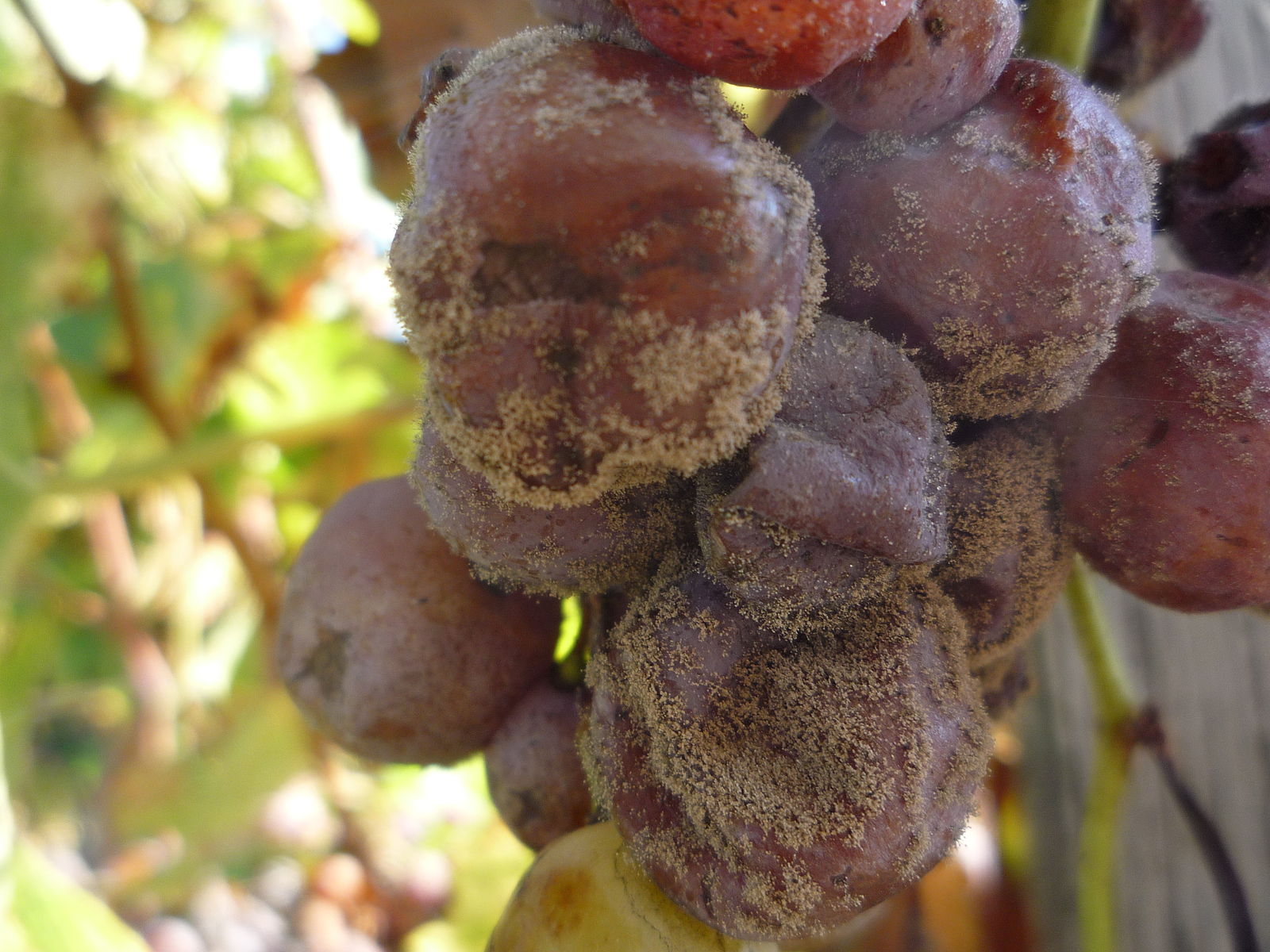
An arduous traditional method of sweetening wine requires a special fungus. Image via Wikimedia
The other side of the situation is that sweet wines are often sweetened using other means than the painstaking traditional methods of pursuing a first frost, partial sun-drying or the elusive noble rot (grapes affected by the Botrytis cinerea fungus that gives sweetness to wines like Tokaj). Li explains that, “If you make enough wine to fill 10,000 bottles but you fill them with 20% sugar water or chemical sweetener then your cost is greatly diminished.”
This analysis sheds unexpected light on the very conundrum that sent us down this path; why can buying wine (that we like) in China be such a shot in the dark? Nonetheless, we leave the meeting excited. Not just because we found a guaranteed-to-please red wine for our repertoire but more importantly, a surefire gift. The depth of insight and imagination imbued into the packaging makes either of these wines the ultimate gift for a Guangdong godfather. If we ever need to make a good impression on a suspicious prospective father-in-law then it will be Dim Dong at the door.
The wines we tried can be purchased from Yudloulei at the QR code below:

[Cover image via Lao Li]
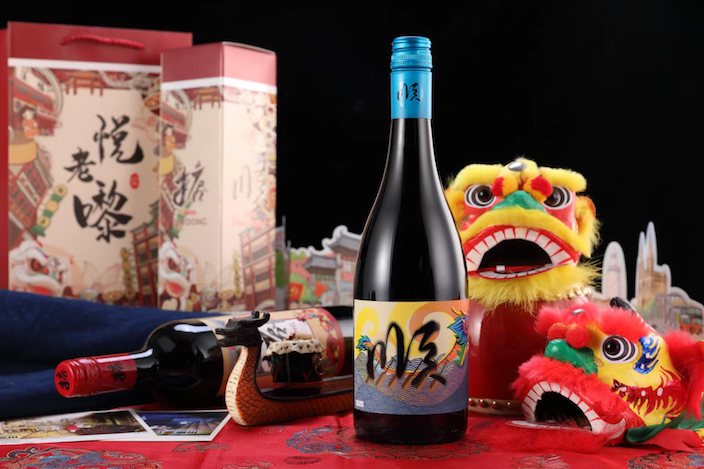





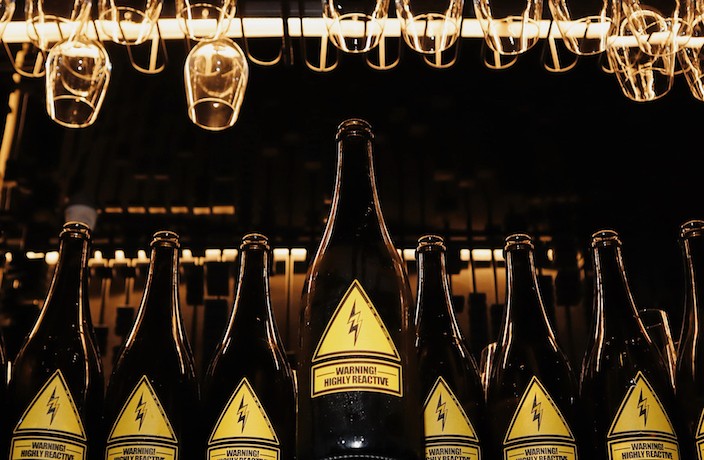














0 User Comments